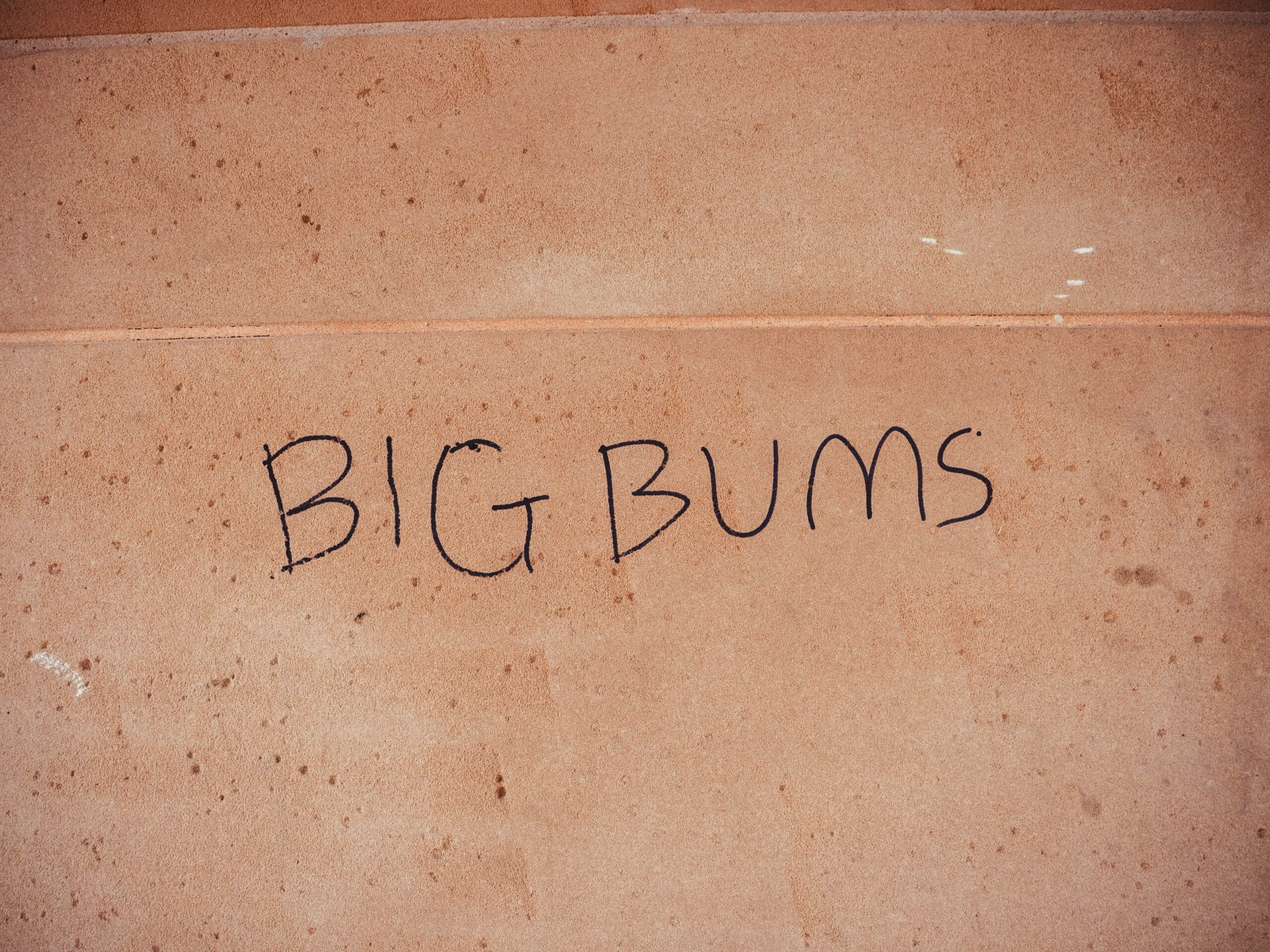Are you ready to unveil the hidden mysteries of handwriting? Get ready for a fascinating journey into the world of loops, slants, and strokes. In this article, we will delve deep into the enigmatic realm of handwriting, unravelling some fun facts that will leave you astounded. Prepare to be amazed as we expose the intricate complexities behind this seemingly everyday activity. So buckle up, because it’s time to discover the intriguing and often overlooked secrets of handwriting!
Fun Facts About Handwriting
Handwriting is a seemingly mundane activity that we engage in daily. But have you ever stopped to think about the hidden intricacies behind this basic skill? In this article, we will unveil some enigmatic fun facts about handwriting that will leave you awestruck.

The World’s First Writing System Was Tiny
Did you know that the world’s first writing system was so tiny that it could fit on the tip of your finger? It’s true! The ancient Sumerians developed a writing system called cuneiform around 3,000 BCE. They used a stylus to create wedge-shaped impressions on small clay tablets. Each tablet could contain hundreds of characters, making it an efficient yet incredibly precise method of communication.
“The ancient Sumerians were true innovators, creating a writing system that was not only functional but also visually striking.”
Medieval Writing Was Regional
During the Middle Ages, different regions developed their own unique writing styles. The script used in England, for example, differed greatly from the script used in Italy. This regional variation made it difficult for scribes to decipher texts from other areas, adding an extra layer of complexity to handwritten manuscripts.
“Medieval scribes didn’t just write words; they created beautiful works of art with their distinct regional handwriting.”
There Is an Entire Field Devoted to Reading Handwriting
Believe it or not, there is a whole field dedicated to the study of handwriting called graphology. Graphologists analyze various aspects of handwriting, such as letter formation, spacing, and slant to gain insights into a person’s character or personality traits. While not considered a scientific discipline, graphology has captivated people’s curiosity for centuries.
“Graphology may not be an exact science, but it offers a fascinating glimpse into the mysterious connections between handwriting and personality.”
Charlemagne Was a Stickler for Handwriting
Charlemagne, the famous medieval emperor, understood the importance of legible handwriting. He was known for his insistence on scribes producing clear and uniform scripts. To achieve this, Charlemagne even commissioned the creation of a new style of handwriting called Carolingian minuscule, which became widely adopted across Europe.
“Charlemagne’s commitment to legible handwriting left a lasting legacy, shaping the way we write even today.”
Monks Were Not Fans of Printing Presses
In the 15th century, the invention of the printing press revolutionized the way information was disseminated. However, many monks were wary of this new technology as it threatened their role as the primary producers of books. They clung to their beloved handwritten manuscripts, believing that printing presses would negatively impact the quality and authenticity of texts.
“For monks, handwriting was not just a task but a sacred art that they fiercely protected from the emerging era of mass production.”
The First Font Was Very Script-Like
When you think of fonts, you might picture Arial, Times New Roman, or Helvetica. But did you know that the first font used in printing was actually designed to resemble beautiful, handwritten scripts? Johannes Gutenberg, the inventor of the printing press, created a font called Textura, which imitated the style of handwriting found in medieval manuscripts.
“Gutenberg’s Textura font bridged the gap between the handwritten past and the printed future, preserving the elegance of script in the early days of typography.”
Historically, Handwriting Professionals Were Quite Upwardly Mobile
In the past, individuals with excellent handwriting skills had a distinct advantage. They could pursue careers as scribes, secretaries, or calligraphers, gaining access to prestigious positions and higher social standing. Handwriting was the gateway to success in various professions, emphasizing its significance in society.
“In a time when literacy was a luxury, those who excelled in handwriting held the key to opportunities and social mobility.”
In the 17th Century, Handwriting Was Personally Revealing
During the 17th century, people believed that a person’s handwriting revealed aspects of their character. Handwriting analysis was used to determine a person’s morality, intelligence, and even their suitability for marriage. A well-regarded handwriting could open doors, while a messy scrawl could reflect poorly on an individual.
“The 17th century marked an era where your penmanship could speak volumes about who you were as a person, determining both your opportunities and societal perception.”
Good Handwriting Can Have an Effect on Language Fluency and Spelling
Did you know that good handwriting can actually enhance your language fluency and spelling abilities? Research has shown that the physical act of handwriting helps activate neural pathways in the brain, leading to better retention and comprehension of written language. So, the next time you jot down a note by hand, know that you’re benefiting your language skills too!
“Improving your handwriting not only enhances your penmanship but also strengthens your language abilities, making you a more confident communicator.”
Good Handwriting Shows That the Person is Organized and Balanced
Beyond the functional benefits, good handwriting reflects an individual’s organizational skills and balance in life. A neat and well-structured script suggests a person who pays attention to detail, values order, and exercises discipline. So, take pride in your handwriting as it may just reveal more about you than you think!
“The way you craft your letters can reveal a lot about your personality, showcasing your inner sense of organization and balance to the world.”
Handwriting Is Different for Every Person
One of the most fascinating aspects of handwriting is its uniqueness. No two people have the exact same handwriting. Each person develops their own distinct style, influenced by factors such as motor skills, cultural background, and personal preferences. So, cherish your handwriting as it is a visual representation of your individuality.
“Handwriting is like your personal signature on paper, encapsulating the essence of who you are in every stroke and curve.”
People with Good Handwriting Have the Correct Word Space, Which Reveals Their Personality
The spacing between words in your handwriting can provide additional insights into your personality traits. Those with well-structured word spacing tend to be organized, logical thinkers, while uneven spacing may indicate a more creative and spontaneous nature. So, even the tiniest details in your handwriting can speak volumes about your character.
“The way you space your words tells a unique story about your personality, unraveling the intricacies of your thought process.”
Bad Handwriting Is a Sign of Creativity and Intelligence
Contrary to popular belief, bad handwriting is not always a cause for concern. In fact, studies have shown that messy handwriting can actually be a sign of creativity and intelligence. It suggests that the writer’s mind is working faster than their hand, resulting in a unique and sometimes illegible script. So, if your handwriting is a little messy, embrace it as a testament to your artistic and intellectual flair.
“Embrace your messy handwriting; it’s a testament to the creative and intelligent mind that lies beneath.”
Learning Letters in an Unfamiliar Alphabet by Hand Rather Than Typing May Lead to Longer-Term Memories
When it comes to learning a new alphabet or language, recent research suggests that writing by hand may have a distinct advantage over typing. Engaging the motor skills involved in handwriting activates multiple regions in the brain, leading to more robust and longer-lasting memories. So, next time you’re learning a new script, try picking up a pen and paper for an enhanced learning experience.
“In the realm of language learning, the pen may hold the power to forge stronger and more enduring memories.”
In conclusion, handwriting is far more than just a simple act of putting pen to paper. It holds a myriad of enigmatic fun facts, from ancient writing systems to personal revelations. Next time you pick up a pen, take a moment to appreciate the hidden intricacies that make handwriting a truly remarkable human skill.
Calligraphy is not just an art form; it is an exquisite journey that has fascinated people for centuries. If you are curious to learn some interesting and fun facts about calligraphy, click here to unveil the mysteries: fun facts about calligraphy. Discover the secrets behind the intricate strokes, the historical significance of different styles, and the surprising health benefits that come along with practicing this ancient art. Embark on this captivating adventure and dive into the mesmerizing world of calligraphy.
The article “Fun Facts about Handwriting” explores the captivating history, surprising connections, and modern applications of this often-overlooked art form. Delve into the amazing history of handwriting and uncover the secrets that lie within each stroke, as you click here to learn more about the fascinating world of handwriting: amazing history of handwriting. Discover the intriguing correlations between handwriting and culture, and how this seemingly simple act reveals surprising insights into our society. Click here to unveil the surprising connections between handwriting and culture: surprising connections between handwriting and culture. Additionally, embark on a journey into the present and explore the modern applications of handwriting, as new technologies blend with this timeless skill. Click here to uncover the remarkable ways handwriting is incorporated into our modern lives: modern applications of handwriting.
FAQ
Question 1
What is the significance of the world’s first writing system being tiny?
Answer 1
The world’s first writing system was tiny, which highlights the intricate nature of early forms of written communication. Despite its size, it served as the foundation for the written word and paved the way for the development of more advanced writing systems.
Question 2
How did regional differences influence medieval writing?
Answer 2
Medieval writing was heavily influenced by regional variations. Different areas had their own unique writing styles and practices, showcasing the diversity and evolution of handwriting during that time period.
Question 3
Is there a specific field dedicated to reading handwriting?
Answer 3
Yes, there is an entire field devoted to reading handwriting known as graphology. Graphologists study the various aspects of handwriting to gain insights into a person’s character traits and personality.
Question 4
Was Charlemagne known for emphasizing the importance of handwriting?
Answer 4
Yes, Charlemagne, the famous ruler of the Frankish Empire, was a stickler for handwriting. He recognized the significance of clear and legible handwriting, implementing educational reforms that focused on improving penmanship.
Question 5
Why were monks not fans of printing presses?
Answer 5
Monks, who were scribes responsible for copying texts by hand, were not enthusiastic about printing presses. The rise of printing threatened their role as manuscript copyists, leading to resistance and concerns about the quality and accuracy of printed texts.
Question 6
What did the first font look like?
Answer 6
The first font resembled a script-like style, mirroring the appearance of handwriting. It aimed to replicate the elegance and fluidity of calligraphy in printed materials.
Question 7
Were handwriting professionals socially mobile in the past?
Answer 7
Historically, handwriting professionals had the potential for upward social mobility. Skilled scribes and calligraphers were in demand and could find employment in various positions, including working for royal courts or religious institutions.
Question 8
How was handwriting personally revealing in the 17th century?
Answer 8
During the 17th century, handwriting was considered personally revealing. It was believed that an individual’s handwriting style could offer insights into their character, emotions, and even their honesty.
Question 9
Can good handwriting have an impact on language fluency and spelling?
Answer 9
Yes, good handwriting can have a positive effect on language fluency and spelling. The act of writing neatly and legibly enhances cognitive processes and can contribute to improved language skills and accuracy in spelling.
Question 10
Does good handwriting indicate a person’s organization and balance?
Answer 10
Yes, good handwriting is often associated with organizational skills and a sense of balance. The ability to write in a structured and coherent manner can suggest that the individual possesses an orderly and methodical mindset.
Question 11
Is handwriting unique to each individual?
Answer 11
Yes, handwriting is different for every person. Each individual develops their own distinct writing style, influenced by factors such as muscle memory, personal preferences, and individual idiosyncrasies.
Question 12
What does the correct word space in handwriting reveal about a person’s personality?
Answer 12
The correct word spacing in handwriting can provide insights into a person’s personality. Consistent and well-balanced word spacing suggests an organized and detail-oriented individual.
Question 13
Is bad handwriting an indication of creativity and intelligence?
Answer 13
Contrary to popular belief, bad handwriting is not necessarily a sign of creativity and intelligence. While creativity and intelligence can exist independent of handwriting skills, legible and clear handwriting is generally valued as it enhances communication and readability.
Question 14
Does learning by hand lead to better long-term memory than typing?
Answer 14
Research suggests that learning letters in an unfamiliar alphabet by hand, rather than typing, may lead to better long-term memory retention. The physical act of writing engages multiple senses and cognitive processes, facilitating stronger memory formation.
- Georgia Platform: A Southern Strategy, 1850s - March 31, 2025
- How many weeks is 40 days: Quick Conversion Guide for Accurate Results - March 31, 2025
- How many feet is 300 meters? 984 Feet: Understand Length Conversions Easily - March 31, 2025
















